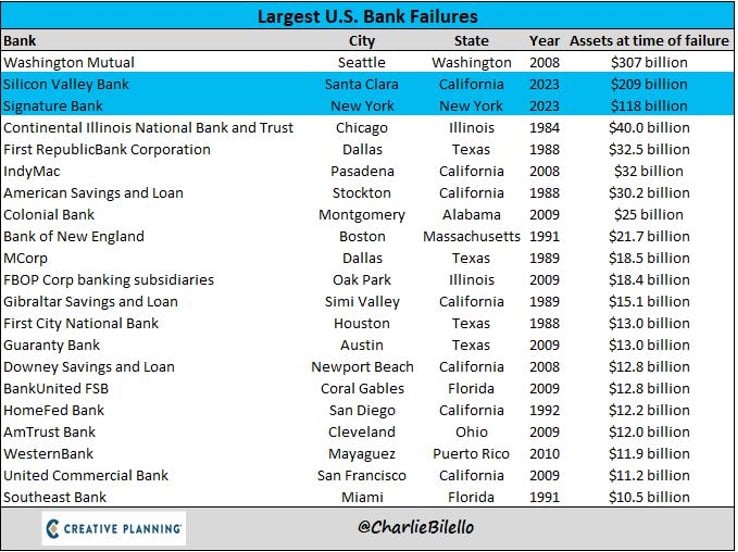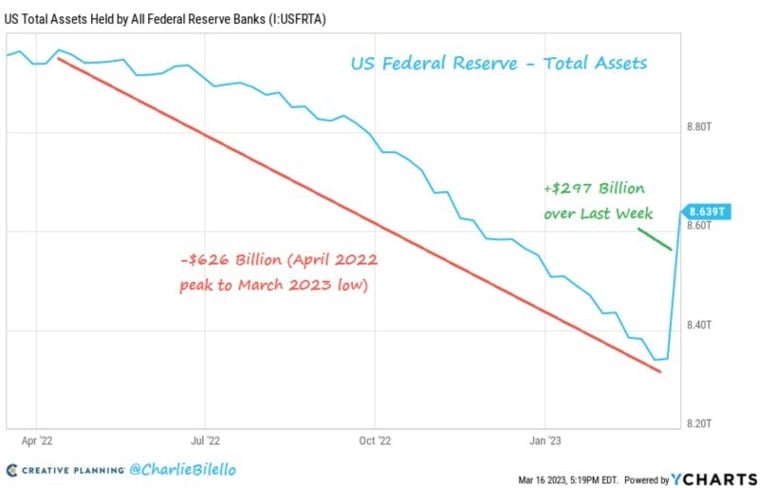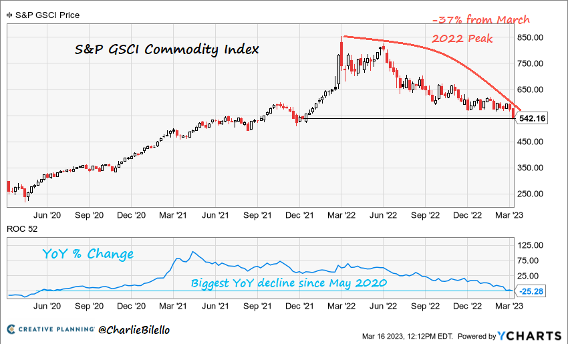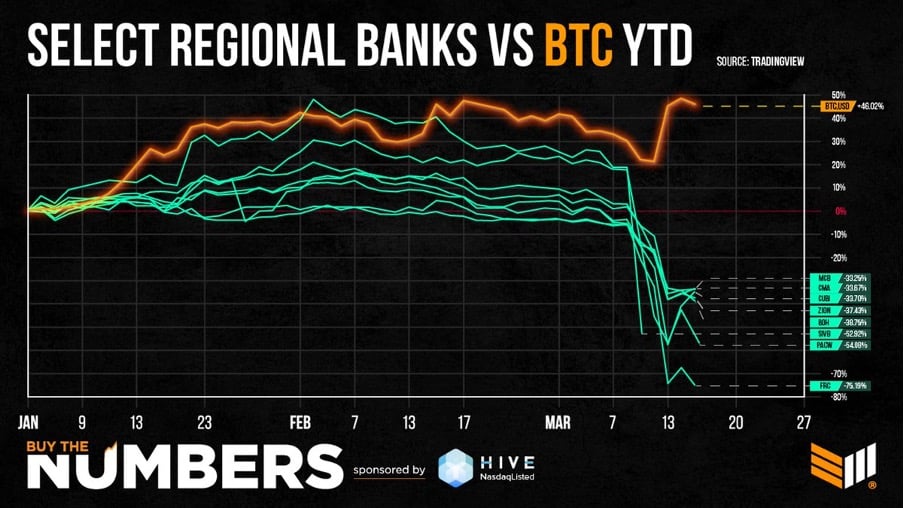Chart #1 —
UBS to buy Credit Suisse for 3 billion Swiss francs
Earlier this weekend, the Swiss National Bank and regulator Finma told their international counterparts that they considered a deal with UBS to be the only option to stem the collapse of confidence in Credit Suisse. According to the Financial Times, the bank's deposit outflows exceeded 10 billion Swiss francs a day last week, as fears for its future intensified.
The boards of both banks met this weekend. Credit Suisse's top regulators in the U.S., U.K. and Switzerland reviewed the legal structure of a deal and the concessions UBS was seeking.
UBS wants to be allowed to phase in any capital requirements it would face. In addition, UBS has requested some form of indemnification or government agreement to cover future legal costs.
UBS had a market value of $65 billion, while Credit Suisse was worth $8 billion on Friday. The buyout offer is 59% below Friday's stock price.
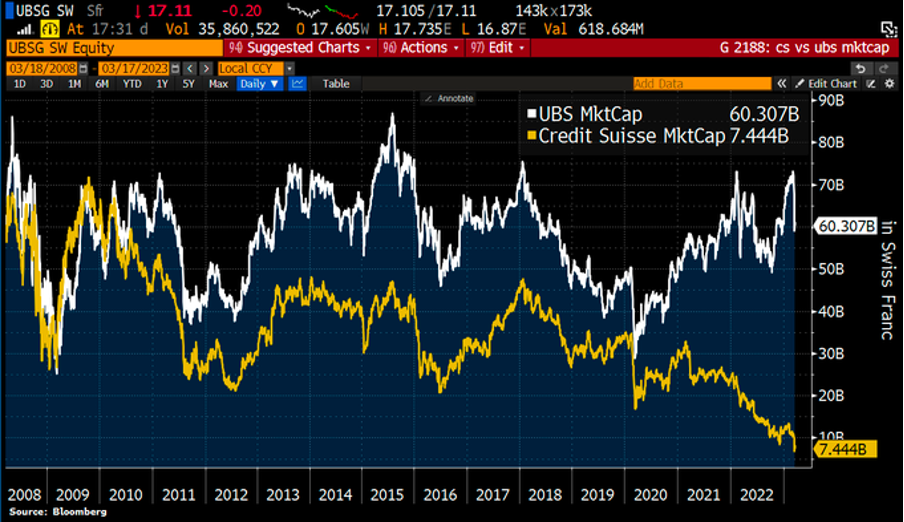
Source: Bloomberg



.png)
